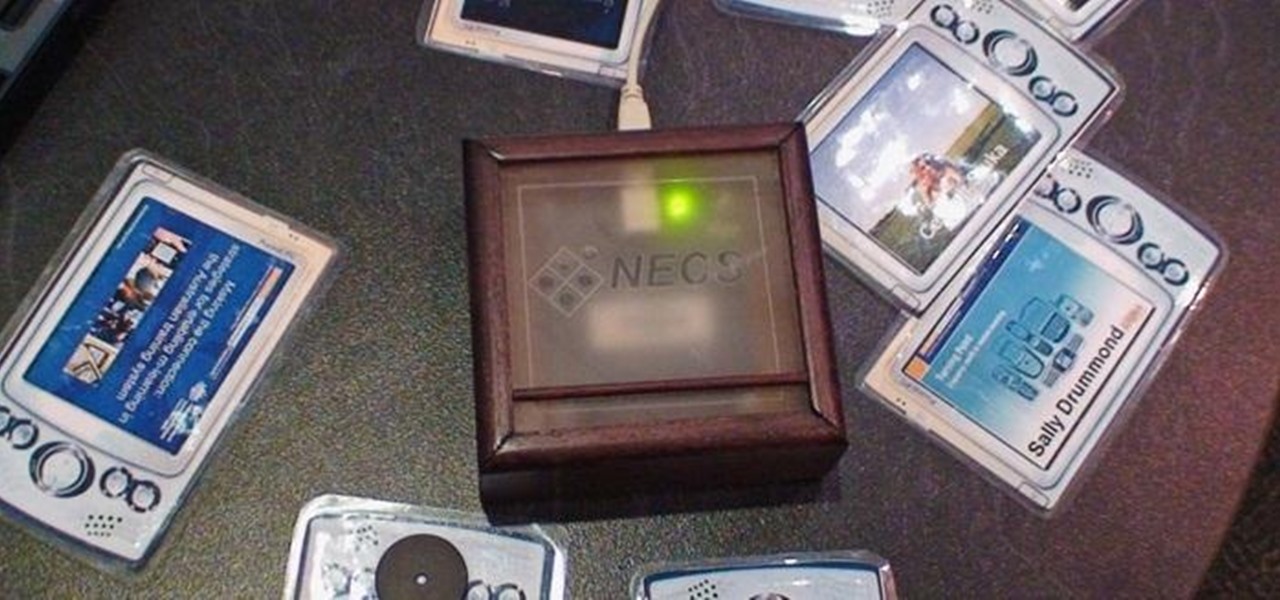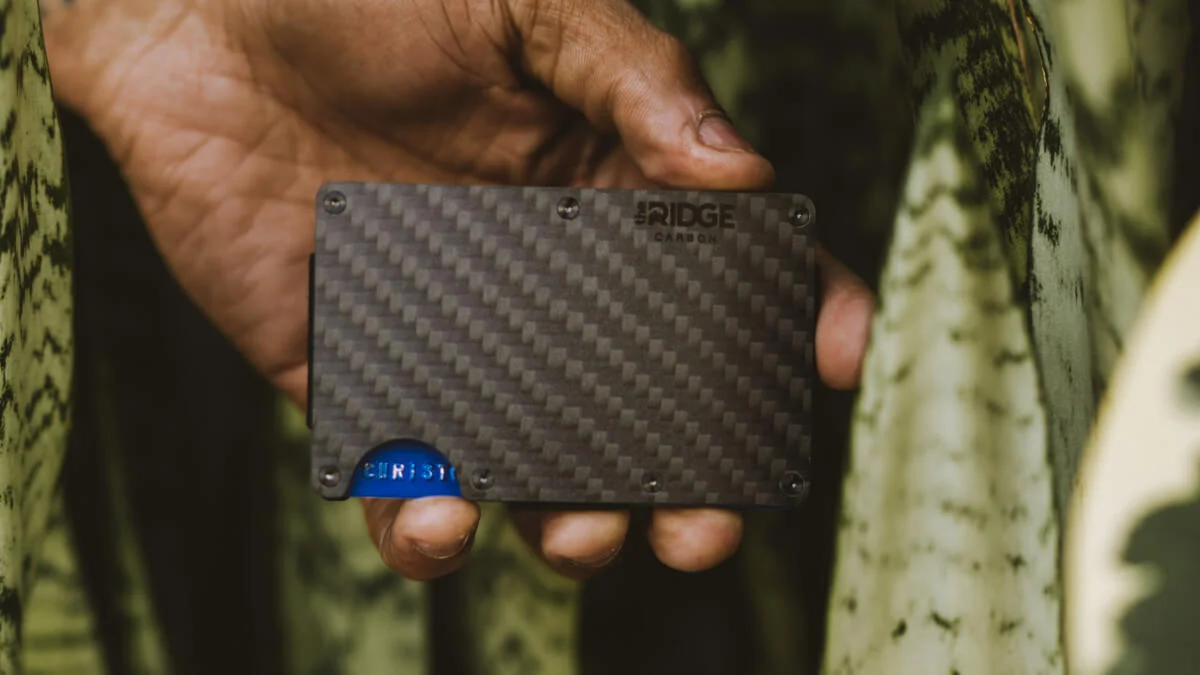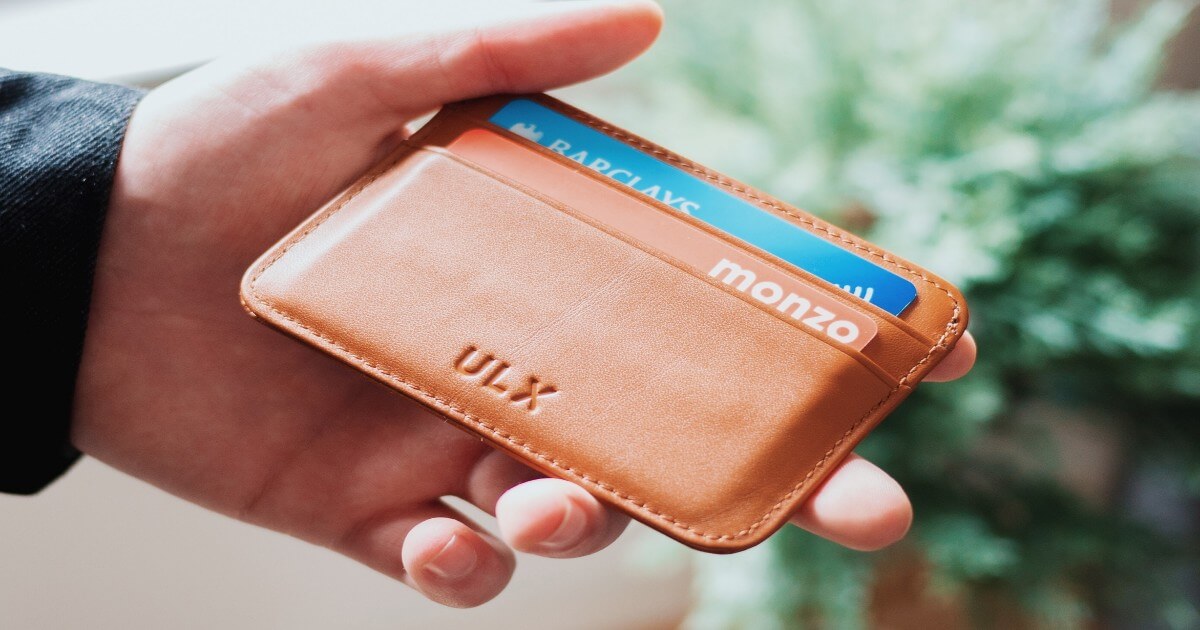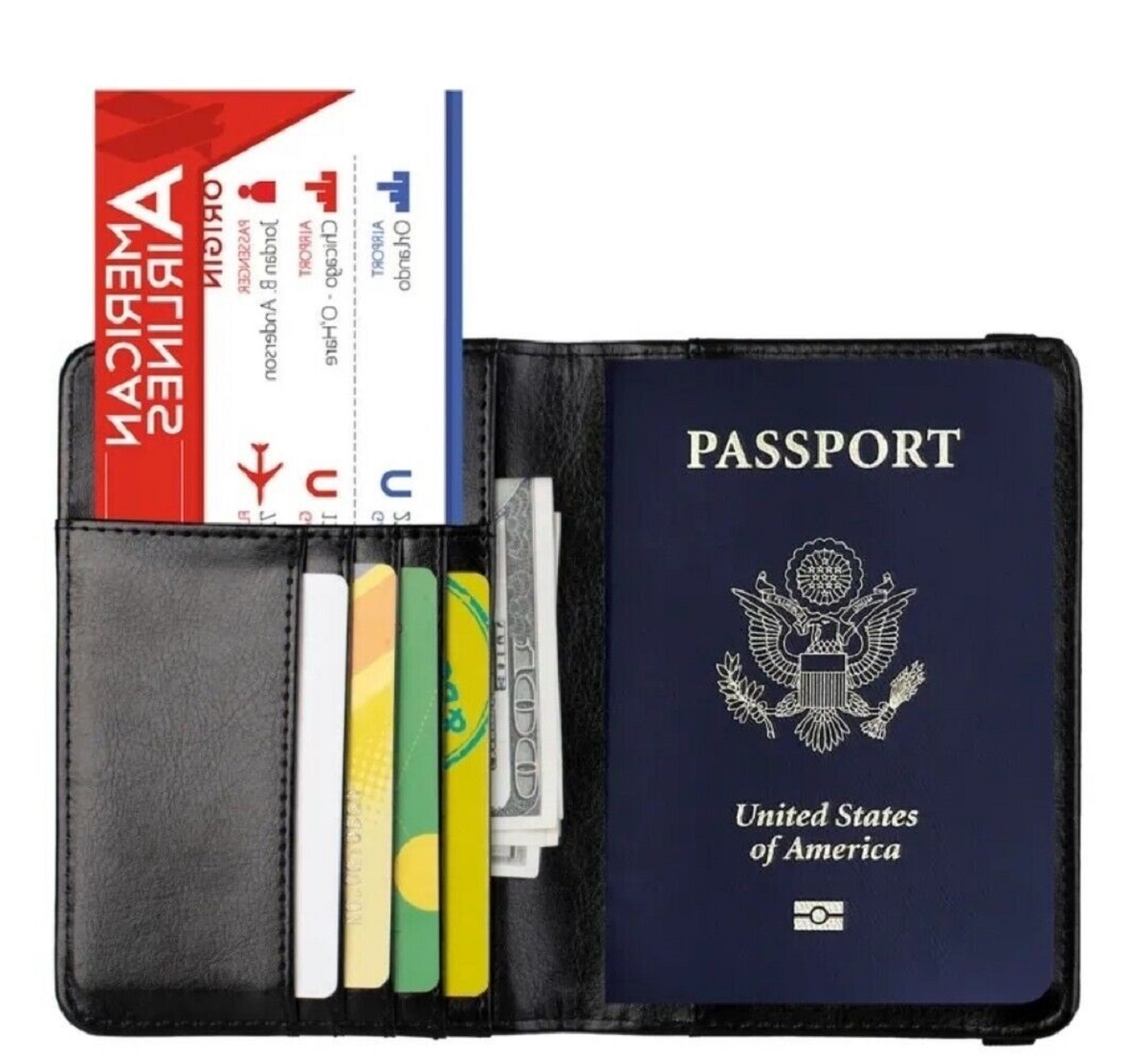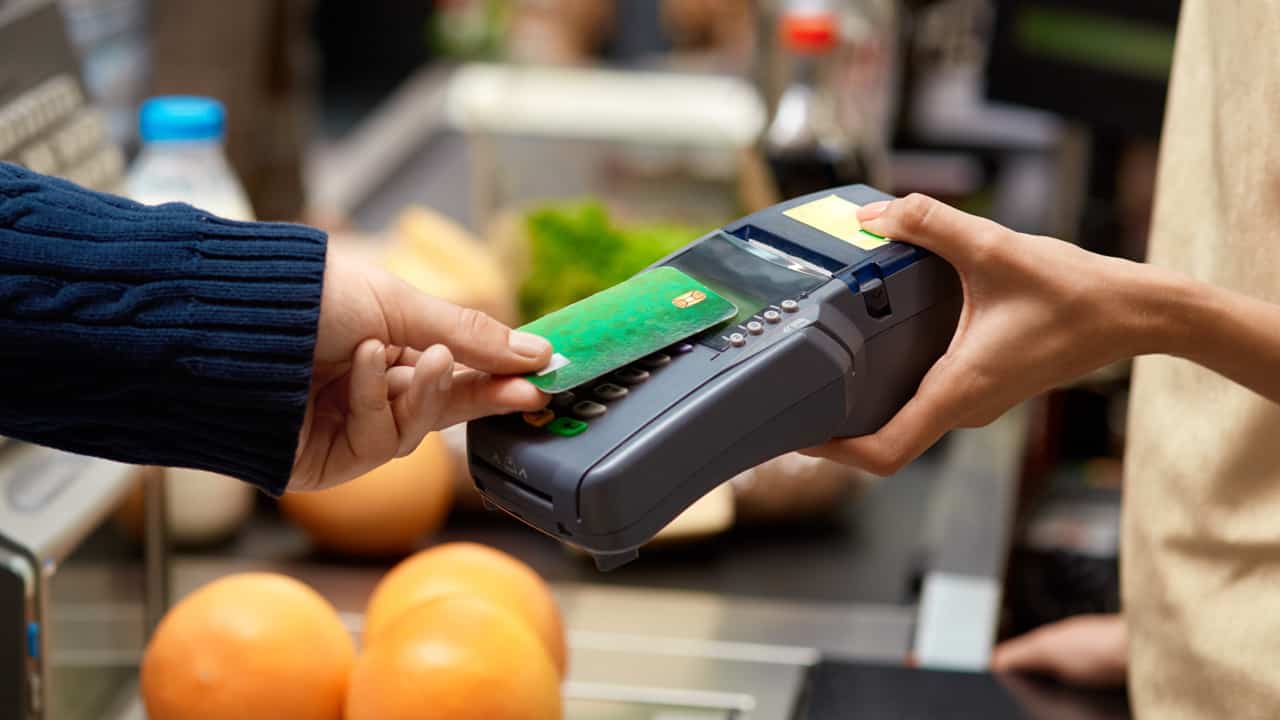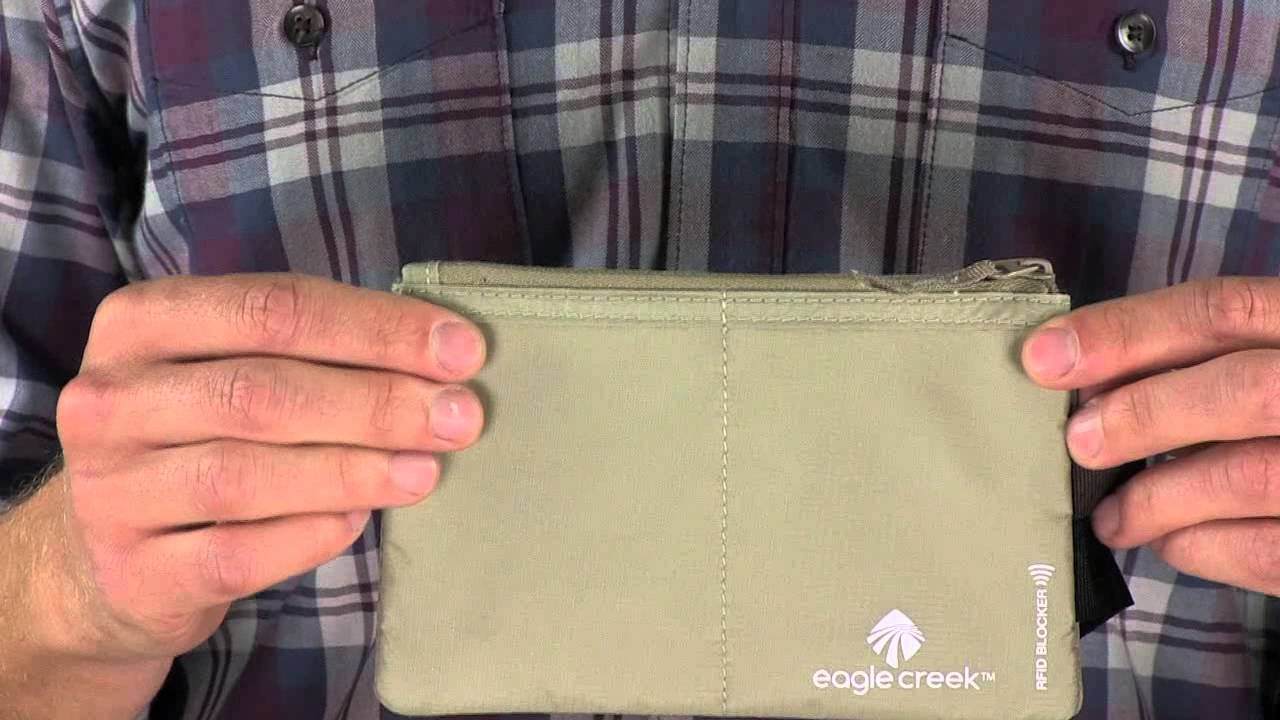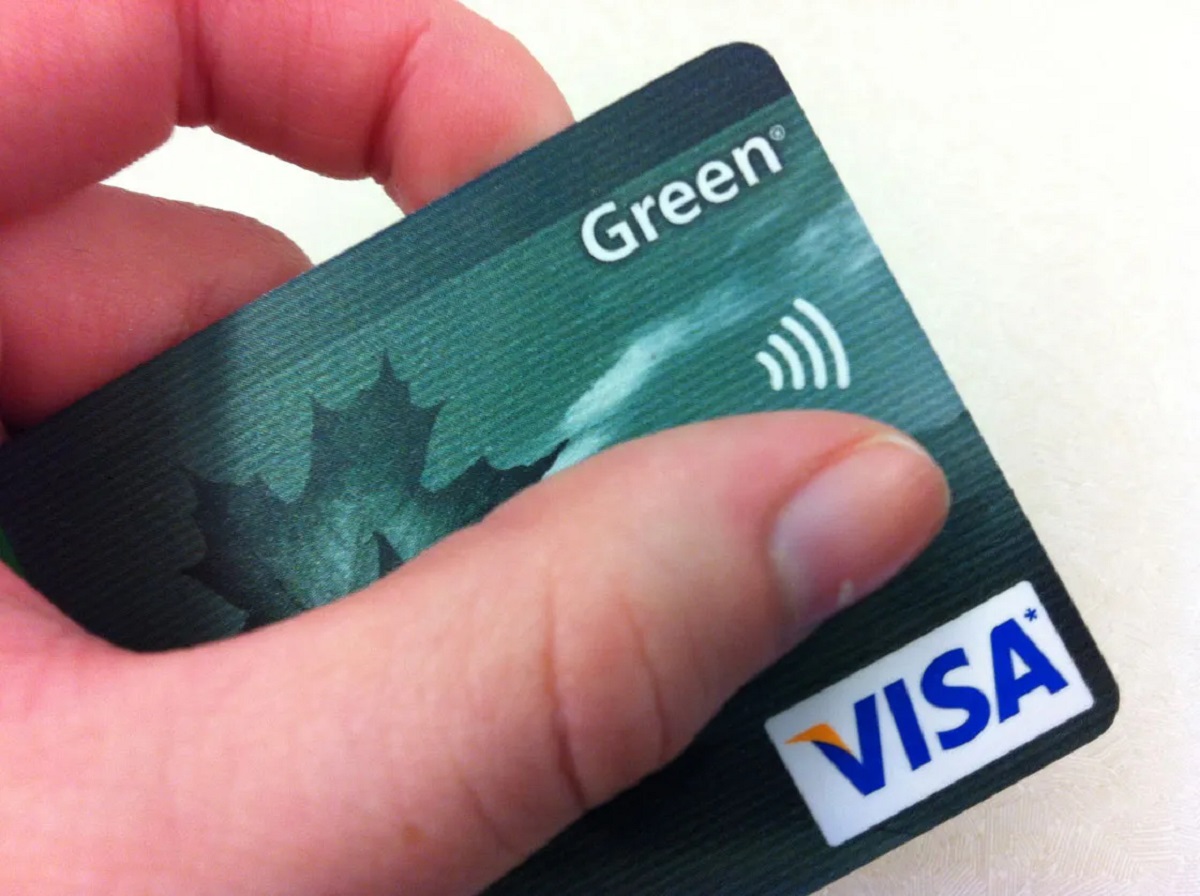Introduction
Welcome to our guide on how to block an RFID reader. In today’s modern world, technology has become an integral part of our lives. From contactless payments to electronic access control systems, Radio Frequency Identification (RFID) technology offers convenience and efficiency. However, with the increasing use of RFID technology, concerns about privacy and security have emerged.
An RFID reader is a device that uses electromagnetic fields to wirelessly read and transfer data from RFID tags or cards. These tags contain a unique identifier and are commonly used in various applications such as credit cards, passports, keycards, and even in some retail items. While RFID technology has numerous benefits, there are instances where you may want to block an RFID reader.
RFID readers can unintentionally access your personal information or track your movements without your knowledge or consent. This raises concerns about identity theft and potential privacy breaches. Fortunately, there are several methods available to block RFID readers and protect your sensitive information.
In this guide, we will explore the different methods you can use to block an RFID reader effectively. Whether you want to safeguard your credit card details or protect your passport from unauthorized scanning, this article will provide you with the knowledge and tools to ensure your personal information remains secure.
From RFID-blocking wallets and sleeves to specially designed fabrics and shielding materials, we will discuss various options that are readily available in the market. We will also explore DIY alternatives, such as using aluminum foil or metal shielding to block RFID signals. Each method has its advantages and considerations, so you can choose the one that best suits your needs and preferences.
Now, let’s dive into the world of RFID-blocking techniques and discover how you can protect your personal information from the prying eyes of RFID readers.
What is an RFID Reader?
An RFID reader is a device that uses radio waves to wirelessly communicate with and read information from RFID tags or cards. RFID, which stands for Radio Frequency Identification, is a technology that enables the identification and tracking of objects or individuals using radio waves.
The RFID reader consists of an antenna, a transceiver, and a decoder. The antenna emits radio waves that are received by the RFID tag or card. The tag or card contains a microchip and an antenna that picks up the radio waves and responds by transmitting its unique identifier back to the reader. The reader captures the response and decodes the information, retrieving the data stored on the RFID tag.
RFID readers come in various forms and sizes, ranging from handheld devices to fixed installations. Handheld RFID readers are commonly used in inventory management, asset tracking, and access control applications. They allow for easy scanning and data collection in different environments. Fixed RFID readers, on the other hand, are installed in specific locations where objects or individuals need to be identified as they pass through a designated area.
RFID technology is widely adopted in various industries due to its ability to enhance operational efficiency and automate processes. In retail, RFID tags on products enable quick and accurate inventory management, reducing stock discrepancies and improving supply chain visibility. In transportation and logistics, RFID technology enables real-time tracking of goods and containers, streamlining the shipping process. RFID cards are also commonly used in access control systems to grant authorized individuals entry to secured areas.
While RFID technology offers numerous benefits, there are concerns about the security and privacy implications. RFID tags can be read from a distance without the user’s knowledge or consent, making it possible for unauthorized individuals to access sensitive information. This has prompted the need for RFID-blocking solutions to protect personal data and prevent potential security breaches.
In the next section, we will explore how RFID readers work in more detail, understanding the communication process between the reader and the RFID tag. By gaining a better understanding of the technology, you will be better equipped to employ effective methods to block RFID readers when necessary.
How does an RFID Reader work?
An RFID reader operates using electromagnetic fields to communicate with RFID tags or cards. The process involves the transmission and reception of radio waves between the reader and the tag. Let’s dive deeper into how an RFID reader works:
1. Reader Initialization: When the RFID reader is powered on, it initializes by sending out a radio frequency signal through its antenna. This signal energizes the nearby RFID tags or cards, preparing them for communication.
2. Tag Activation: The radio frequency signal emitted by the reader antenna is received by the antenna on the RFID tag or card. This energy allows the tag’s microchip to power up and respond to the reader’s signal. The tag’s antenna then sends a signal back to the reader.
3. Data Communication: Once the tag is activated, it exchanges information with the reader through a process called backscattering. The tag modulates the radio frequency signal it receives from the reader and reflects it back with its own data encoded. The reader antenna captures this reflected signal and decodes the data transmitted by the tag.
4. Data Retrieval: Upon receiving the signal from the tag, the RFID reader decodes the information contained within it. This information could include a unique identifier, product details, or other relevant data stored on the tag. The reader then processes and presents this data to the user or an associated system for further action.
5. Communication Range: The range at which an RFID reader can communicate with an RFID tag varies depending on the reader’s power and frequency, as well as the design and size of the tag. Typically, the range can range from a few centimeters to several meters. Short-range readers are used for applications such as access control, while long-range readers are used for inventory management or vehicle tracking.
6. Security Considerations: While RFID technology provides convenience and efficiency, there are potential security concerns. The transmission of data between the reader and the tag can be intercepted by unauthorized individuals, leading to potential privacy breaches or identity theft. This vulnerability has led to the development of RFID-blocking solutions to protect personal information and prevent unauthorized access.
Understanding how an RFID reader works is crucial in implementing effective methods to block RFID readers when necessary. In the next section, we will explore why you might want to block an RFID reader and the potential risks associated with RFID technology.
Why would you want to block an RFID Reader?
While RFID technology offers convenience and efficiency in various applications, there are circumstances where you may want to block an RFID reader. Let’s explore some of the reasons why you might choose to do so:
1. Protection of Personal Information: RFID tags and cards used in contactless payments, identification cards, passports, and other applications contain sensitive personal data. By blocking RFID readers, you can prevent unauthorized individuals from accessing and capturing this information. This protects you from potential identity theft and financial fraud.
2. Privacy Concerns: RFID technology enables easy tracking and monitoring of tagged objects or individuals. However, this also raises concerns about privacy invasion and surveillance. By blocking RFID readers, you can maintain your privacy and prevent others from tracking your movements or activities without your consent.
3. Security Risks: RFID tags can be vulnerable to hacking or cloning, allowing malicious individuals to gain unauthorized access or exploit system vulnerabilities. Blocking RFID readers can add an extra layer of security to prevent such attacks and protect your assets or confidential information.
4. Personal Preference: Some individuals may simply prefer to have control over when and how their RFID tags are read. By blocking RFID readers, you have the option to choose when to share your information and maintain a sense of control in an increasingly connected world.
5. Peace of Mind: Blocking RFID readers can provide peace of mind, knowing that your personal information is secure. Whether you’re traveling, attending events, or going about your daily activities, taking steps to block RFID readers can help alleviate concerns about data breaches and unauthorized access.
It’s important to note that not all RFID readers pose a threat or require blocking. Many legitimate and necessary applications exist where RFID technology plays a vital role. However, understanding the risks and having the ability to block RFID readers when needed allows you to take control of your security and privacy.
In the next section, we will explore various methods to block RFID readers effectively. From RFID-blocking wallets and sleeves to DIY solutions, you will discover practical ways to protect your sensitive information and maintain your privacy.
Methods to block an RFID Reader
When it comes to blocking RFID readers, there are several effective methods to choose from. Whether you prefer a commercial solution or a do-it-yourself approach, these methods provide reliable ways to protect your personal information. Let’s explore some of the most common methods:
- Use an RFID-blocking wallet or cardholder: An RFID-blocking wallet or cardholder contains special shielding materials that prevent RFID signals from reaching your cards or passports stored inside. These wallets are designed to create a Faraday cage effect, blocking all incoming and outgoing RFID signals.
- Use an RFID-blocking sleeve or pouch: Similar to an RFID-blocking wallet, an RFID-blocking sleeve or pouch is a slim, protective casing that shields your cards or passports from RFID readers. These sleeves are convenient and can be easily slipped onto your cards when needed.
- Use an RFID-blocking fabric or material: RFID-blocking fabrics or materials can be used to create custom-made covers or cases. These materials are woven with metallic fibers that block RFID signals when placed over your cards, passports, or other RFID-enabled objects.
- Use an RFID-blocking passport cover or shield: If you specifically want to protect your passport, an RFID-blocking passport cover or shield provides an effective solution. These covers are designed to encase your passport and block RFID signals, preventing unauthorized scanning.
- Use an RFID-blocking phone case or wallet: Nowadays, many smartphones have built-in RFID capabilities, enabling features like contactless payments. Using an RFID-blocking phone case or wallet can safeguard your phone from unwanted RFID reading, protecting your payment and identification information.
- Use an RFID-blocking blocker card or tag: A blocker card or tag is a small device that emits a signal that interferes with RFID communication. By placing a blocker card alongside your RFID-enabled cards, it creates a jamming effect that prevents nearby RFID readers from reading your cards’ information.
- Use aluminum foil or metal shielding: As a low-cost DIY option, wrapping your RFID-enabled cards or passports in aluminum foil or placing them inside a metal container can block RFID signals effectively. The metal acts as a barrier, preventing RFID readers from accessing the enclosed objects.
Each method has its advantages and considerations, so choose the one that aligns with your preferences and requirements. Whether you opt for a commercial RFID-blocking product or a DIY solution, the goal remains the same – to protect your personal information and maintain your privacy.
By implementing these methods, you can confidently go about your daily activities knowing that you have taken active steps to block RFID readers and safeguard your sensitive data.
In the next section, we will conclude our guide and summarize the key points discussed throughout this article. Stay tuned!
Use an RFID-blocking wallet or cardholder
One of the most convenient and popular methods to block RFID readers is by using an RFID-blocking wallet or cardholder. These specially designed wallets and cardholders contain built-in shielding materials that prevent RFID signals from reaching your cards or passports.
The RFID-blocking technology used in these wallets and cardholders creates a Faraday cage effect. A Faraday cage is an enclosure made from conductive materials that blocks electromagnetic fields. In the case of RFID-blocking wallets, they are typically lined with a layer of metal such as aluminum or copper, which acts as an effective shield against RFID signals.
The design of RFID-blocking wallets and cardholders is similar to standard wallets, ensuring that you can carry your cards and identification without any hassle. They come in a variety of styles, sizes, and materials to suit personal preferences. Whether you prefer a minimalist cardholder or a spacious wallet, there are RFID-blocking options available to cater to your needs.
When you place your cards or passport inside an RFID-blocking wallet or cardholder, the shielding material creates a barrier that prevents RFID signals from penetrating. This ensures that your personal information remains secure and cannot be read by unauthorized RFID readers in close proximity.
RFID-blocking wallets and cardholders offer a convenient and effective solution for day-to-day use. They provide peace of mind, knowing that your credit card details, identification information, and other sensitive data are protected from potential identity theft or unauthorized scanning.
It’s important to note that while RFID-blocking wallets and cardholders are effective in blocking RFID signals, they do not protect against other forms of data theft, such as online hacking or physical theft. To ensure comprehensive protection, it’s recommended to combine the use of an RFID-blocking wallet with other security measures, such as strong passwords and vigilant online behavior.
Overall, an RFID-blocking wallet or cardholder is a practical and reliable choice for blocking RFID readers. With this simple and convenient solution, you can confidently carry your cards and passports, knowing that your personal information is shielded from potential RFID scanning and unauthorized access.
In the next section, we will explore another method to block RFID readers – using an RFID-blocking sleeve or pouch. Find out how this small accessory can add an extra layer of protection for your RFID-enabled cards and passports.
Use an RFID-blocking sleeve or pouch
Another effective method to block RFID readers is by using an RFID-blocking sleeve or pouch. These accessories are designed to fit over your RFID-enabled cards or passports, providing an additional layer of protection against unauthorized scanning.
An RFID-blocking sleeve or pouch is a slim, lightweight casing made with RFID-shielding materials. These materials block the electromagnetic waves used by RFID readers, preventing them from communicating with the RFID-enabled objects inside.
Using an RFID-blocking sleeve or pouch is incredibly simple. You just need to slide your card or passport into the sleeve, ensuring that it is fully enclosed. The sleeve or pouch acts as a barrier, creating a Faraday cage effect that prevents RFID signals from reaching the enclosed object.
RFID-blocking sleeves and pouches are designed to be compact and convenient. They come in various sizes to accommodate different card types, such as credit cards, ID cards, or even passports. Some sleeves and pouches may even have multiple compartments, allowing you to store multiple cards or documents in one secure place.
One of the advantages of using RFID-blocking sleeves or pouches is their versatility. They can be used individually or alongside your existing wallet or cardholder. Simply insert your RFID-enabled cards or passports into the sleeves or pouches before placing them in your wallet or cardholder. This provides an extra layer of protection, giving you added peace of mind.
RFID-blocking sleeves and pouches are particularly useful when you need to protect specific cards or documents. For example, if you have a credit card with contactless payment capabilities or a passport with an embedded RFID chip, using an RFID-blocking sleeve or pouch ensures that these items cannot be accessed without your knowledge or consent.
Additionally, RFID-blocking sleeves and pouches are highly portable, making them ideal for travel or situations where you need to quickly secure your RFID-enabled items. You can easily slip them into your pocket, purse, or bag, ensuring that your cards and passports are always protected wherever you go.
In summary, an RFID-blocking sleeve or pouch offers a simple and effective method to block RFID readers. By using this accessory, you can enhance the security of your RFID-enabled cards or passports and effectively safeguard your personal information from unauthorized scanning.
In the next section, we will explore another method to block RFID readers – using RFID-blocking fabric or material. Discover how these innovative materials offer a customizable and versatile solution to protect your RFID-enabled items.
Use an RFID-blocking fabric or material
If you’re looking for a customizable and versatile solution to block RFID readers, consider using RFID-blocking fabric or material. This innovative material is embedded with metallic fibers that disrupt and block RFID signals, ensuring the protection of your RFID-enabled cards and passports.
RFID-blocking fabric and materials are flexible and can be easily cut and sewn into custom covers or cases for your cards, passports, or other RFID-enabled objects. They work by creating a barrier that prevents RFID signals from reaching the enclosed items, effectively blocking unauthorized scanning.
With RFID-blocking fabric or material, you have the freedom to create your own RFID-blocking accessories tailored to your specific needs. You can make RFID-blocking pouches, wallets, or even covers for your smartphone or tablet. This level of customization allows you to protect a wide range of RFID-enabled items in a way that suits your style and preferences.
Many RFID-blocking fabrics and materials are made with a combination of conductive fibers, such as copper or nickel, and other synthetic materials. These materials are woven together to create a shield that can effectively block RFID signals. The metallic fibers reflexively disrupt the radio waves emitted by RFID readers, preventing them from communicating with the RFID tags or cards.
RFID-blocking fabric and materials are easy to use and integrate into your daily routine. Simply wrap your cards or passports with the fabric or place them inside a case made with the material, ensuring that they are completely covered. This will ensure that no RFID signals can penetrate and access your sensitive information.
The versatility of RFID-blocking fabric and materials extends beyond individual items. You can also use them to line the interior of bags or wallets, creating an RFID-blocking compartment to protect all your RFID-enabled cards at once. This approach provides a comprehensive shield against unauthorized RFID scanning.
It’s worth noting that RFID-blocking fabric or material may be available for purchase in pre-cut sizes or as a whole sheet that can be trimmed to your desired dimensions. This allows you to tailor the material to fit your specific needs and applications.
In summary, utilizing RFID-blocking fabric or material offers a customizable and versatile solution to block RFID readers. By creating your own RFID-blocking accessories or incorporating it into existing items, you can protect your RFID-enabled cards, passports, and other important documents with ease.
Next, we will explore another method to block RFID readers – using an RFID-blocking passport cover or shield. Discover how you can safeguard your passport from unauthorized scanning using this specialized protective accessory.
Use an RFID-blocking passport cover or shield
If you want to protect your passport from unauthorized scanning, using an RFID-blocking passport cover or shield is an excellent option. These specialized accessories are designed to encase your passport and block RFID signals, ensuring the security of your personal information.
An RFID-blocking passport cover or shield contains RFID-blocking material that prevents RFID readers from accessing the embedded RFID chip in your passport. The cover or shield acts as a barrier, blocking electromagnetic waves and rendering your passport unreadable by unauthorized scanners.
RFID-blocking passport covers or shields provide a convenient and effective way to guard against potential identity theft and unauthorized scanning. By using this accessory, you can travel with peace of mind, knowing that your personal information is protected.
RFID-blocking passport covers and shields are designed to fit standard passport sizes, ensuring a snug and secure fit. They are typically made from materials that contain metallic fibers or layers, creating a protective shield around your passport. Some passport covers are also equipped with additional features such as slots for credit cards or boarding passes, offering added functionality and convenience.
Using an RFID-blocking passport cover or shield is incredibly easy. Simply insert your passport into the cover or slide it into the shield, ensuring that it is fully enclosed within the RFID-blocking material. This will effectively block any attempts by RFID readers to access the information stored in the chip inside your passport.
It’s worth mentioning that while RFID-blocking covers or shields are highly effective in preventing unauthorized scanning of your passport, they do not interfere with the passport’s physical security features or the ability to be read by legitimate passport scanning systems at airports or border crossings. It is still possible to use your passport normally while it is protected within the RFID-blocking cover or shield.
Additionally, having an RFID-blocking passport cover or shield adds an extra layer of durability and protection to your passport, safeguarding it from wear and tear, spills, and other potential damage.
In summary, using an RFID-blocking passport cover or shield ensures the security and privacy of your passport’s RFID chip. By encasing your passport within this specially designed accessory, you can confidently carry your passport during your travels, knowing that your personal information is safeguarded from unauthorized scanning.
Next, we will explore another effective method to block RFID readers – using an RFID-blocking phone case or wallet. Discover how these accessories can protect your mobile devices from unwanted RFID communication.
Use an RFID-blocking phone case or wallet
In today’s digital age, many smartphones come equipped with RFID capabilities, allowing for convenient features like contactless payments. To protect your mobile devices from unwanted RFID communication, using an RFID-blocking phone case or wallet is a practical and effective solution.
An RFID-blocking phone case or wallet is designed with special materials that block RFID signals from reaching your phone’s RFID-enabled features. These cases and wallets create a protective shield around your phone, preventing unauthorized RFID communication and potential data theft.
Using an RFID-blocking phone case or wallet is simple and convenient. You can easily slip your phone into the case or store it in the RFID-blocking compartment of the wallet. Once your phone is enclosed, the RFID-blocking material acts as a barrier, effectively shielding your phone from RFID readers in close proximity.
RFID-blocking phone cases and wallets come in a wide range of styles, sizes, and designs to accommodate different phone models and personal preferences. You can find options that fit sleekly around your phone or ones that offer additional storage for cards, cash, or other essentials.
By using an RFID-blocking phone case or wallet, you can confidently go about your day knowing that your phone’s RFID capabilities are protected. This is particularly beneficial when it comes to contactless payment methods, as it ensures that your payment information remains secure and cannot be accessed without your knowledge or consent.
Moreover, an RFID-blocking phone case or wallet offers additional benefits beyond RFID protection. It can shield your phone from scratches, bumps, and other physical damage, extending the lifespan of your device. Some cases may even provide additional features like kickstands, card slots, or wrist straps, enhancing the functionality and convenience of your phone.
It’s important to note that while RFID-blocking phone cases and wallets protect against unauthorized RFID communication, they do not interfere with other wireless features of your phone, such as cellular, Wi-Fi, or Bluetooth connectivity. You can continue to use your phone normally for calls, texts, and internet browsing without any disruptions.
In summary, using an RFID-blocking phone case or wallet is a smart way to protect your mobile device from unwanted RFID communication. By investing in this accessory, you can enjoy the convenience of your phone’s RFID capabilities while ensuring the security of your personal information.
In the next section, we will explore an alternative method to block RFID readers – using an RFID-blocking blocker card or tag. Discover how these small and portable devices can help protect your RFID-enabled cards from unauthorized scanning.
Use an RFID-blocking blocker card or tag
An RFID-blocking blocker card or tag is a small and portable device that can help you block RFID readers and protect your RFID-enabled cards from unauthorized scanning. These devices emit a signal that interferes with RFID communication, preventing nearby readers from accessing your card’s information.
Using an RFID-blocking blocker card or tag is incredibly straightforward. You simply need to place the blocker card or tag alongside your RFID-enabled cards, ensuring they are in close proximity. The blocker device emits a radio signal that disrupts the RFID communication between the reader and your cards, making it virtually impossible for the reader to access the information stored on the RFID chip.
Blocker cards and tags are designed to be compact and lightweight, making them convenient to carry and use. They are typically the same size as a credit card or smaller, allowing them to easily fit into your wallet, cardholder, or even be attached to a keychain. This portability ensures that you can have an RFID-blocking solution readily available whenever you need it.
One of the advantages of using an RFID-blocking blocker card or tag is that it provides protection for multiple RFID-enabled cards simultaneously. You don’t need a separate blocker device for each card you possess. Simply placing the blocker card or tag in your wallet alongside your cards creates a jamming effect that effectively blocks RFID communication for all the cards in close proximity.
Blocker cards and tags are a versatile solution as they can be used with various types of RFID-enabled cards, such as credit cards, access cards, and transit cards. They can provide an extra layer of security, especially when you’re in crowded places where the risk of unauthorized scanning is higher.
It’s worth noting that while blocker cards and tags are effective at blocking RFID readers, they do not permanently disable or deactivate your RFIDs. You can still use your cards normally by removing the blocker card or tag when needed, allowing them to communicate with legitimate RFID readers.
Overall, using an RFID-blocking blocker card or tag is a convenient method to actively block RFID readers and protect your RFID-enabled cards. With this small and portable device, you can have peace of mind knowing that your card’s information is secure and protected from potential unauthorized scanning.
In the next section, we will explore a simple and cost-effective method to block RFID readers – using aluminum foil or metal shielding. Discover how these readily available materials can help you create a barrier against RFID signals.
Use aluminum foil or metal shielding
If you’re looking for a simple and cost-effective method to block RFID readers, using aluminum foil or metal shielding can be an effective solution. These readily available materials can create a barrier that prevents RFID signals from reaching your RFID-enabled cards or passports.
Aluminum foil, a common household item, can effectively block RFID signals due to its conductivity. Wrapping your RFID-enabled items in aluminum foil creates a protective shield that prevents RFID readers from accessing the information stored on the RFID chips.
To use aluminum foil as an RFID-blocking measure, you simply need to wrap your cards or passports tightly in the foil. Ensure that every surface of the item is covered to create a complete barrier. This method can be particularly useful when you need a quick and temporary solution to block RFID communication.
Another option is to use metal shielding, such as a metal case or container, to block RFID signals. Metal materials have the ability to disrupt electromagnetic waves and consequently block RFID readers. By placing your RFID-enabled items inside a metal case or container, you create a shield that effectively prevents RFID signals from reaching your cards or passports.
When using metal shielding, ensure that the case or container you use provides full coverage and is made from a conductive material like aluminum, copper, or steel. This will ensure maximum blocking of RFID signals. Remember to keep the lid or cover of the case closed to maintain the integrity of the shielding.
It’s important to note that while aluminum foil or metal shielding can effectively block RFID signals, they might not be as convenient or aesthetically pleasing as dedicated RFID-blocking products. Aluminum foil can tear or become damaged over time, requiring regular replacement. Metal shielding solutions may also add bulk or weight to your wallet or bag.
Additionally, using aluminum foil or metal shielding might be more suitable for occasional use or situations where other RFID-blocking options are not available. For long-term or everyday protection, dedicated RFID-blocking products like wallets, sleeves, or pouches are recommended.
To summarize, using aluminum foil or metal shielding can be a simple and cost-effective method to block RFID readers. While it may not offer the same convenience or durability as dedicated RFID-blocking products, it provides a quick and temporary solution to protect your RFID-enabled cards or passports from potential unauthorized scanning.
That concludes our exploration of methods to block RFID readers. These techniques provide a range of options to protect your personal information and maintain your privacy. Remember to choose the method that best suits your needs and preferences, ensuring that your sensitive data remains secure in an increasingly connected world.
Conclusion
As we conclude our guide on how to block an RFID reader, it’s clear that RFID technology offers convenience and efficiency but also raises concerns about privacy and security. However, there are various effective methods you can employ to protect your personal information and maintain your privacy.
From RFID-blocking wallets and sleeves to specially designed fabrics and shielding materials, the market offers a wide range of options to block RFID readers. These solutions provide peace of mind, helping you safeguard your credit card details, identification information, and other sensitive data from potential identity theft or unauthorized scanning.
Furthermore, there are several do-it-yourself methods you can utilize, such as using aluminum foil or metal shielding, to block RFID signals. While these DIY methods may not offer the same convenience or durability as dedicated RFID-blocking products, they provide quick and temporary solutions for blocking RFID readers in a pinch.
It’s crucial to assess your needs, preferences, and budget when selecting an RFID-blocking method. Determine the level of protection required for your RFID-enabled cards, passports, or other objects, and choose the solution that aligns with your specific circumstances.
Remember that blocking RFID readers should be seen as one aspect of maintaining your overall security and privacy. It’s essential to apply other security measures, such as using strong passwords, being cautious with sharing personal information online, and keeping your devices updated with the latest security patches.
By taking proactive steps to block RFID readers, you can confidently navigate the digital world while protecting your personal information from potential threats.
We hope that this guide has provided you with valuable insights into the world of RFID-blocking techniques. Armed with this knowledge, you can now make informed decisions about which methods to utilize to ensure the security of your sensitive data.
Thank you for joining us on this journey to learn how to block an RFID reader. Stay vigilant, stay protected!







